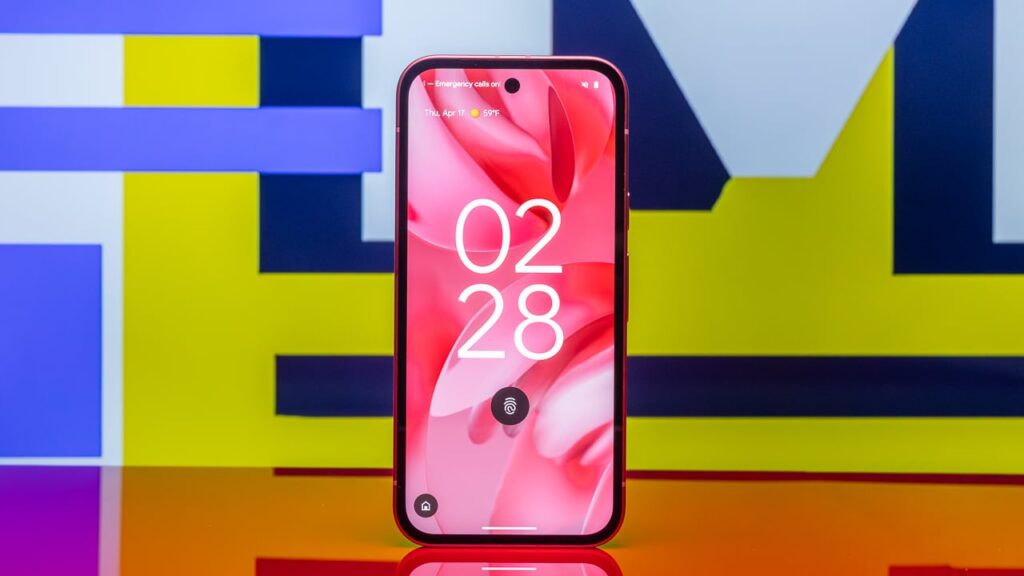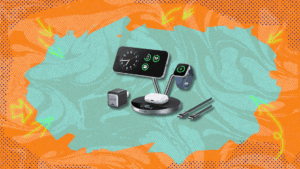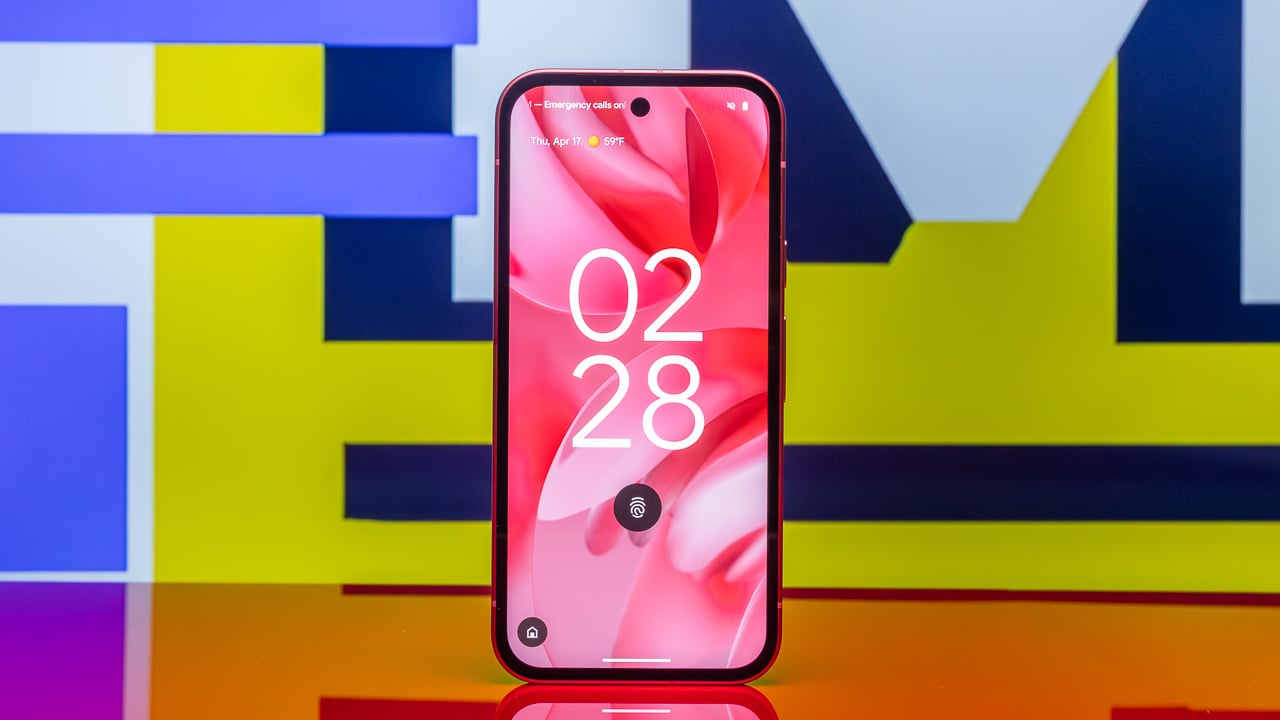
For years, Google’s Pixel A-series line has been one of the best deals in smartphone-land. As long as you can tolerate (or hell, even prefer) Android to iOS, these are generally the best phones that can be had for $500.
That hasn’t changed with the new Pixel 9a, but the market landscape has…somewhat. Apple recently introduced its version of a budget phone with the iPhone 16e, a $599 device that offers something close to the Pixel A-series experience, but on iOS. However, if you’re not enamored with the Apple ecosystem and need a good mid-range phone with flagship features, the Pixel 9a is still the champ in that regard.
I don’t love the Pixel 9a’s new design all that much, but that’s small potatoes compared to its good battery life, solid everyday performance, and feature parity with the comparatively more expensive Pixel 9, which didn’t quite justify its $799 price tag for me.
Google Pixel 9a: Impressive specs, generic design

Credit: Joe Maldonado/Mashable
For a starting price of $499, here’s what you get inside the Pixel 9a:
-
Display: 6.3-inch display
-
Resolution: 1080×2424 resolution and 120Hz variable refresh rate
-
Processor: Google Tensor G4 processor
-
RAM: 8GB
-
Storage: 128GB storage
-
Battery: 5,100mAh battery (24-30 hours in our testing)
Google’s entire gimmick with the A-series Pixel phones is that each one is very close in specs to the previous fall’s flagship Pixel phone, and that’s no different here. The Pixel 9a has the exact same display specs as the Pixel 9, the same processor, and the same starting storage. You’re getting less RAM here (8GB compared to 12GB), but as a trade-off, you’re also getting a bigger battery. The Pixel 9’s measured in at 4,700mAh.
You can also pay an extra $100 to get 256GB storage, but that’s the only variance here.
We’ll get into the practical, everyday differences afforded by those specs in a minute, but the biggest difference between the two phones by far is how they look. The Pixel 9 had the same horizontal camera bar that sat atop the center of the phone’s backside as several other Pixel models before it. That, to me, was sort of an iconic look for the Pixel series, which doesn’t really have any other unique visual signifiers.
Google dropped that entirely with Pixel 9a. Instead, the two rear camera lenses live in a slightly raised little oval-shaped housing on the left-top side of the phone’s back. Put simply, it looks very generic. It looks like a prop phone in a movie where they don’t want to do any product placement. I don’t think it looks bad, mind you, but Google took something that was immediately visually identifiable as a Pixel and turned it into something that, from a distance, just looks like any other generic phone.
That said, it does feel nice in the hands and is just about the right size for me. I also love the color selections this time around: Peony, Iris, Porcelain, and Obsidian. I had the Peony model for review purposes, and it looks just lovely, though not quite as lovely as my pink iPhone 16.
Google Pixel 9a: A flagship display
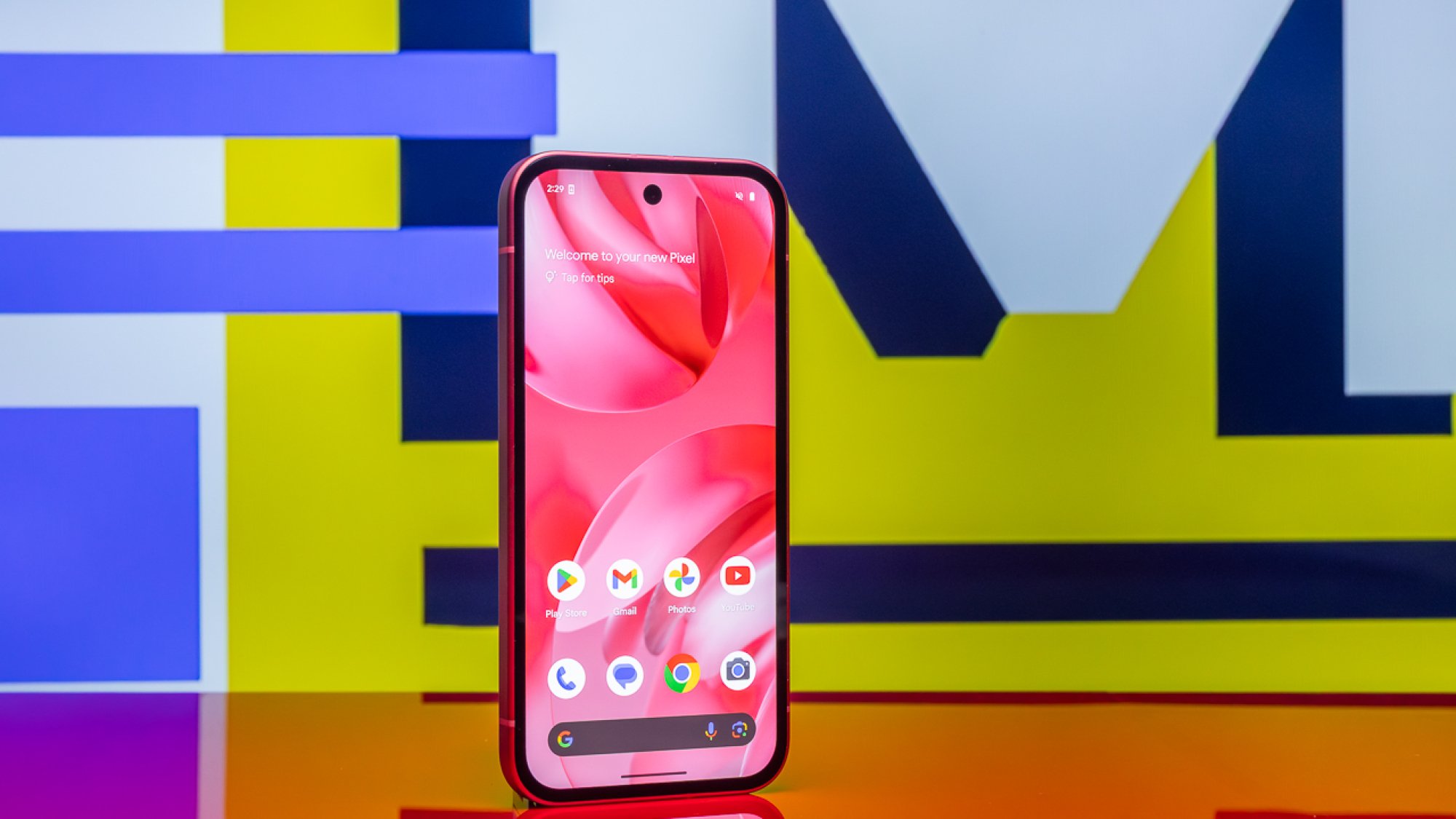
Credit: Joe Maldonado / Mashable
There isn’t a lot to say about the Pixel 9a’s display as compared to the Pixel 9’s because they’re exactly the same. However, compared to the iPhone 16e, there’s one major difference worth noting.
Specifically, Google’s cheaper handset offers a substantially higher refresh rate than Apple’s budget phone. You get up to 120Hz performance on Pixel 9a, while the iPhone 16e is still inexplicably locked to 60Hz. I don’t really understand why Apple is so behind the times on this, locking 120Hz support to its Pro phones only, but that’s still unfortunately the reality we live in.
On its own merits, though, the Pixel 9a’s display didn’t give me anything to complain about. 6.3-inches is about as big as I want a phone to be without it feeling too tall in the hands, and its 2,700 nits of peak brightness more than do the job on a bright, sunny day in Brooklyn.
Google Pixel 9a: Rock-solid performance
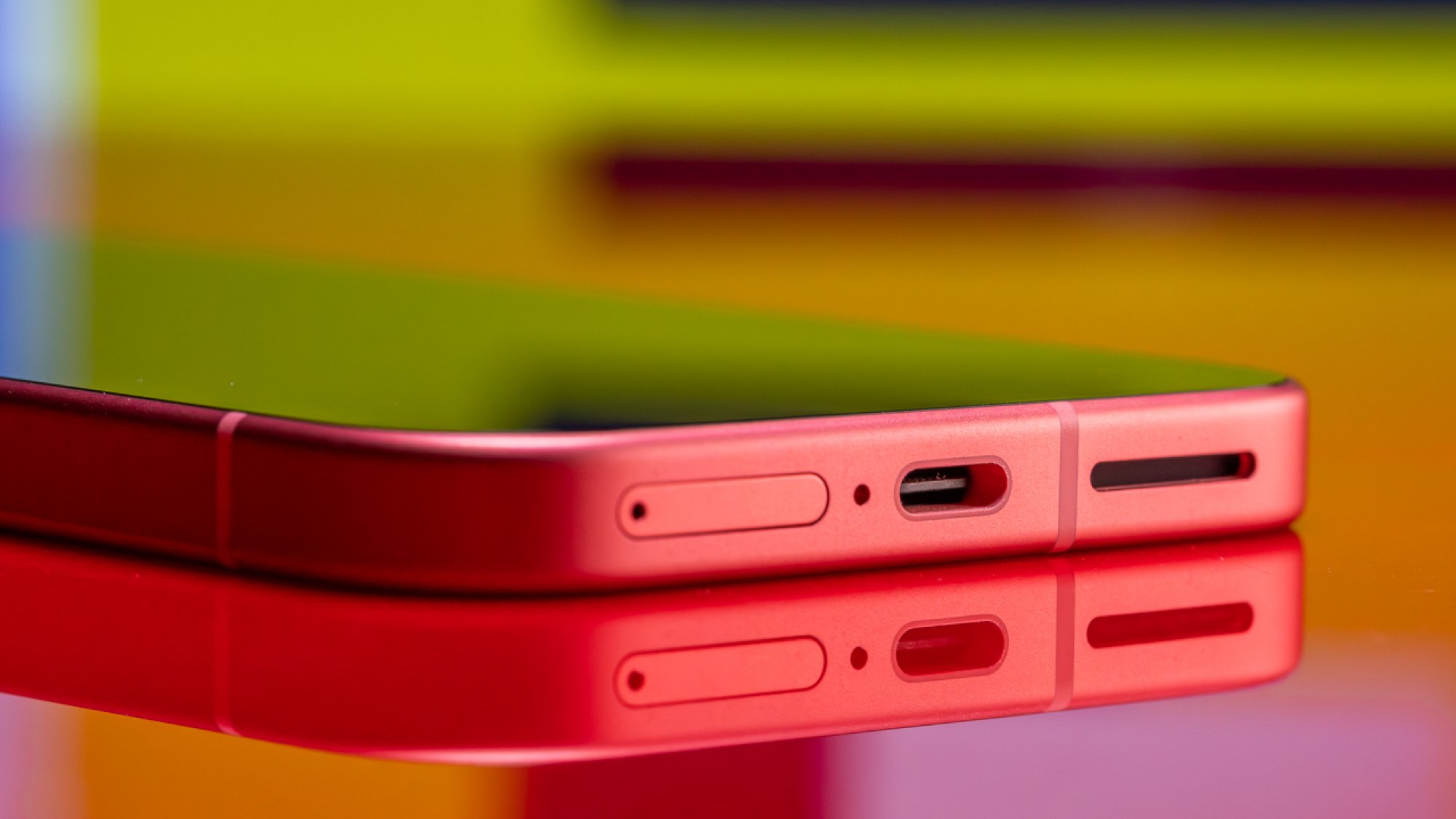
Credit: Joe Maldonado / Mashable
Pixel 9a is powered by the exact same Google Tensor G4 chip as the Pixel 9. At a certain point, you begin to wonder why the Pixel 9 exists at all. Fortunately, this isn’t a review of the now-overpriced Pixel 9.
Anyway, I found no performance hiccups to speak of during my time with Pixel 9a. Setup is a breeze, as always, and apps load as quickly as can be expected during daily use. Multitasking doesn’t seem to slow it down much at all, either. The only thing I would note is that I found the Pixel 9a to get a little warm while watching YouTube videos. Granted, I was using it without a case, so that might mitigate this issue. But just be warned that, if you decide to go caseless, you might feel a tiny bit of heat after prolonged use.
On the metrics side, Pixel 9a doesn’t finish as an elite contender, but it’s also a $500 phone, so it doesn’t need to. Its multi-core score in the Geekbench 6 benchmarking software is 4,229, which is very close to the Pixel 9’s score of 4,358. That’s obviously not even close to the 10,049 you’d get from a Samsung Galaxy S25 Ultra, but that’s a flagship phone, and this isn’t.
The point is that Pixel phones sometimes have underwhelming benchmark scores compared to the competition, but the actual everyday performance is totally fine. I didn’t even notice the reduction in RAM from 12GB to 8GB compared to the Pixel 9 I tested.
The Pixel 9a comes with Gemini built in
Pretty much every phone released in 2025 is now described as an AI smartphone, and the Pixel 9a is no exception. It comes equipped with Google Gemini built-in, including access to Gemini Live and Circle to Search. These are the same AI features that graced the Pixel 9 lineup last year. None of these features has been substantially upgraded in any way, but they’re at least there if you want them. Personally, I find these AI tools quite gimmicky, but if you’re interested in AI bells and whistles, this phone’s got ’em.
At the very least, it’s another notch in the, “Why even buy a Pixel 9?” argument.
Google Pixel 9a: 24 hours of battery life

Credit: Joe Maldonado / Mashable
The Pixel 9a’s 5,100mAh battery is bigger than the 4,700mAh cell in the Pixel 9, but let’s be real: those numbers don’t mean much of anything to the average person.
I tested both phones with Mashable’s standard mobile battery-testing protocol: running videos on loop at 50 percent brightness until they died. When I did this for the Pixel 9 last year, it petered out after 19 hours and 20 minutes. The Pixel 9a, however, was able to last 24 hours and 24 minutes under the same conditions.
That’s a pretty big gap, and the takeaway is that this smartphone lasts a long time for a $500 phone. General use bears this out, too, as I was able to go roughly 24 hours between charges in everyday circumstances, too. Google rates it for 30 hours, which I could see being achievable if you turned off 120Hz mode, but then you’d be giving up one of the big advantages the Pixel 9a has over most iPhone models, so why would you do that?
Google Pixel 9a: How good are the cameras?
I would say the biggest discrepancy between Pixel 9 and Pixel 9a exists in the camera array, which is to be expected. Budget phones rarely have amazing cameras, but for what it’s worth, I think the Pixel 9a does just fine for the price.
You get a 48MP main lens and a 13MP ultra-wide lens on the back, which pale in comparison to the 50MP/48MP equivalents on Pixel 9. The front-facing camera’s 13MP spec is a little bigger than the 10.5MP selfie cam on Pixel 9, at least. Still, if you want better specs, you’re going to want to get a Pixel 9. That much is certain.
Still, the Pixel 9a can take some very vivid, sharp, and colorful shots in its own right.

Credit: Alex Perry / Mashable
One reason the 9a takes such a big step up from the Pixel 8a? The addition of Macro Focus, which lets you get in real close on small objects like budding flowers and capture granular amounts of detail. I don’t love the lack of a clear visual sign that Macro Focus is in effect while using the camera app, but you can see which photos use it in your gallery afterward. It works pretty well!

Credit: Alex Perry / Mashable
This isn’t anything new for Google, but as always, Night Sight is a godsend in low-light conditions. My backyard is impossible to shoot in at night without it. See the before and after for yourself:

Credit: Alex Perry / Mashable

Credit: Alex Perry / Mashable
Unsurprisingly, you only get up to 8x zoom in Pixel 9a, which is the same as Pixel 9. It’s definitely not the incredible 30x zoom you’d find in a Pixel 9 Pro, but it’ll do.

Credit: Alex Perry / Mashable

Credit: Alex Perry / Mashable
Lastly, portrait mode still looks nice. Not much else to say about it.
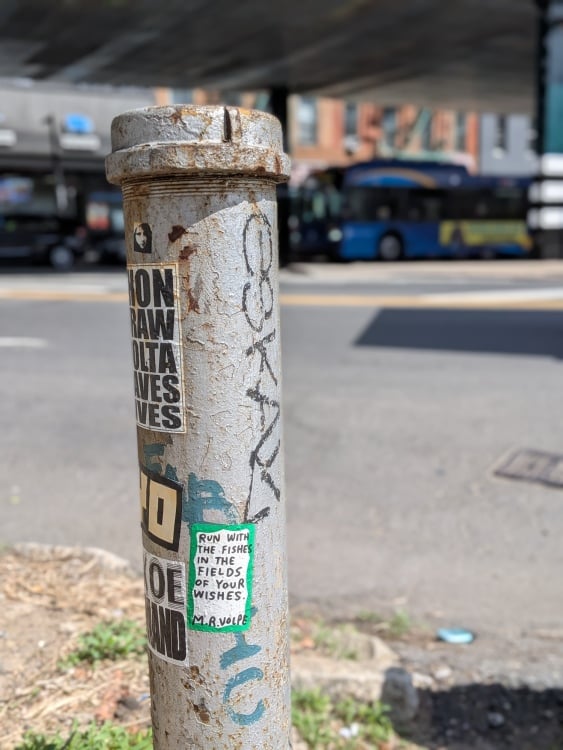
Credit: Alex Perry / Mashable
So, is the Google Pixel 9a worth it?
Android lovers who just want a mostly clean version of the OS with a full feature set and good battery life probably don’t need to look anywhere else. For now, the Pixel 9a is the budget smartphone to beat in 2025.
This conversation is made slightly more interesting by the recent addition of the iPhone 16e, but the Pixel 9a’s display superiority alone kinda settles the argument in my mind, even as a devoted iPhone guy. Aside from that, this is basically just a cheaper Pixel 9 that doesn’t look quite as cool.
For just $500, though, you’re not trying to make a fashion statement. You’re trying to get a quality phone with a decent camera, and the Pixel 9a accomplishes that.
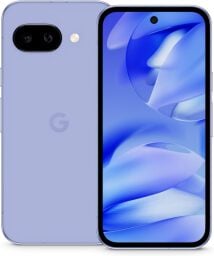
Opens in a new window

